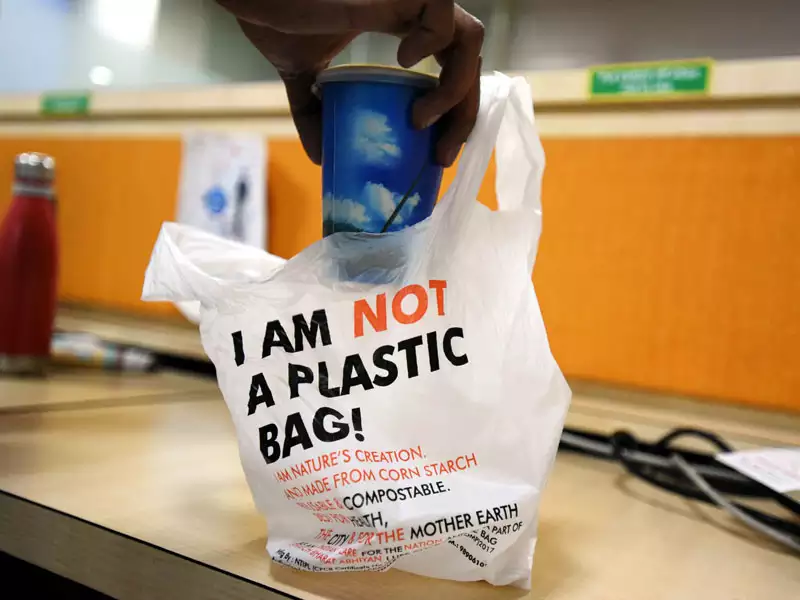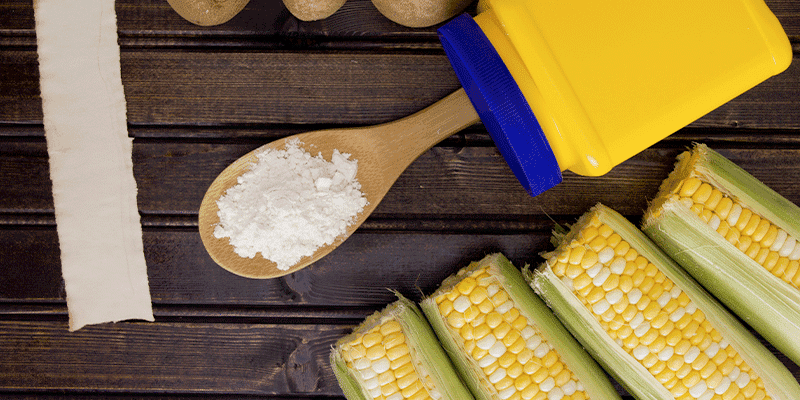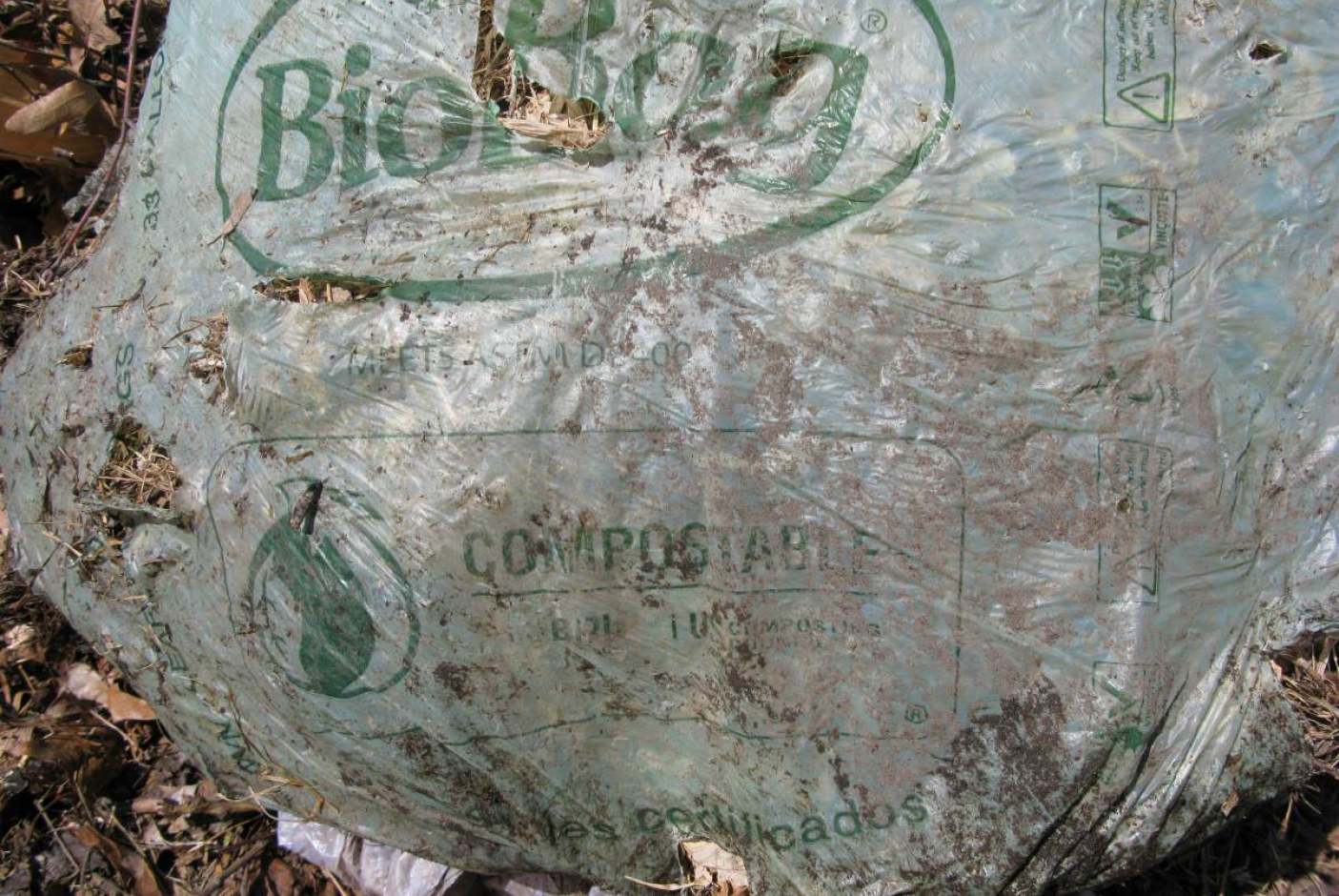Last Updated on June 3, 2024 by Annie Baldwin
With growing concern over plastic pollution, many consumers and companies are looking for more eco-friendly packaging options.
One alternative that has gained popularity in recent years is cornstarch-based bioplastic.
But are these biodegradable cornstarch bags really better for the environment?
Are Cornstarch Bags Environmentally Friendly?

Yes, cornstarch bags are an environmentally friendly option compared to regular plastic bags.
Cornstarch bags are biodegradable and compostable, meaning they break down completely within a few months in a commercial composting facility.
This avoids the problem of plastic bag waste accumulating in landfills and the environment.
Cornstarch bags also have a smaller carbon footprint because they utilize renewable materials instead of fossil fuel-based plastics.
While not perfect, they are a greener alternative to help reduce plastic pollution.
Key Points
- Cornstarch bags are fully biodegradable and compostable within 2-3 months in a commercial composting facility.
- Cornstarch bags are made from a renewable resource (corn) instead of fossil fuel-based plastics.
- Proper disposal through commercial composting prevents cornstarch bags from ending up in landfills.
Our Opinion
As environmental experts, we believe cornstarch bags are a smarter choice compared to conventional plastic bags.
The biodegradability and compostability of cornstarch bags mean they do not persist in the environment or accumulate in landfills like plastic bags.
While cornstarch bags have some drawbacks, they represent an eco-friendly alternative that can help reduce society’s dependence on plastic.
We recommend choosing cornstarch over plastic bags whenever possible.
Proper disposal is key to realizing their environmental benefits.
Are Cornstarch Bags Biodegradable?

Cornstarch bags are marketed as biodegradable and compostable. This means they can break down into natural elements like carbon dioxide and water through natural processes like exposure to microbes, heat, moisture, and UV light. However, many standard composting facilities do not reach the high temperatures needed for complete biodegradation of these plastics.
Some key points on the biodegradability of cornstarch bags:
- Most require industrial composting facilities to fully biodegrade, which are not widely available to consumers.
- They may leave behind microscopic plastic fragments when breaking down.
- Biodegradation time varies from a few months to several years depending on conditions.
While still an improvement over conventional plastics, cornstarch bags may not biodegrade as quickly or completely as many expect. Proper disposal is important to maximize their environmental benefit.
Are Cornstarch Bags Compostable?

Compostability is closely related to biodegradability but with some important distinctions. For a material to be certified compostable, it must break down into natural elements within a certain timeframe in standardized industrial composting conditions.
Here’s what to know about the compostability of cornstarch bags:
- Most cornstarch bags are designed to be compostable but may require commercial composting facilities to break down properly.
- Home compost piles typically do not reach the high heat and moisture levels needed for complete composting.
- Look for bags certified as compostable by organizations like TÜV AUSTRIA or BPI. This ensures they meet specific standards.
- If not composted properly, these bags can still end up in landfills and oceans.
While compostable in theory, the availability of industrial composting facilities is still limited. Consumers must take care to dispose of cornstarch bags responsibly to reap their environmental benefits.
Are Cornstarch Bags Carbon Neutral?
Carbon neutrality is an important consideration for sustainable packaging. Here’s an overview of the carbon footprint of cornstarch bags:
- Cornstarch bags have the potential to be carbon neutral or even negative, but it depends on how they are produced and disposed of.
- The corn used to make PLA emits CO2 when grown but also absorbs it during growth. The net emissions can be low.
- PLA production emits greenhouse gases. However, some manufacturers like NatureWorks use renewable energy to minimize emissions.
- At the end of life, composting or incinerating PLA for energy recovery prevents methane emissions from landfills.
- So while not universally carbon neutral today, with renewable inputs and proper disposal, cornstarch bags can achieve neutral or negative carbon footprints.
As technology and infrastructure improve, cornstarch bags are likely to become more common as a carbon-friendly alternative to traditional plastics. Accuracy in marketing claims is important as this area evolves.
Are Cornstarch Bags Better Than Plastic Bags?
When comparing cornstarch bags to traditional plastic bags, there are pros and cons to consider:
- Cornstarch bags are compostable and biodegrade much faster than plastic.
- They have lower toxicity and are safer for ecosystems if littered.
- But plastic bags require less energy and resources to produce per use.
- And while recyclable, plastic bags have very low recycling rates globally.
- Cornstarch bags can degrade during shipping in humid conditions.
- They are less water resistant than plastic for some applications.
Overall, cornstarch bags are generally considered an improvement over plastic for many single-use applications. But reuse is better when practical. The ideal solution likely involves a mix of reusable, compostable, and recyclable options based on each use case.
Are There Downsides to Using Cornstarch Bags?
While cornstarch bags are often touted as an eco-friendly alternative to plastic, there are some potential downsides to consider:
- Large-scale corn production can deplete soils and require significant fertilizers.
- There are debates about using food crops for materials instead of food.
- Not all cornstarch bags fully biodegrade in home composts.
- They require specific industrial composting conditions to break down.
- Some brands use GMO corn which raises concerns for consumers.
- They are more expensive than plastic bags per unit.
- Performance is not as good as plastic for some applications.
The sustainability of cornstarch bags depends on responsibly sourcing materials and matching the right bag to each use case. But when used properly, they can be a better choice than conventional plastic for many single-use purposes.
FAQ
Are Cornstarch Bags Really Compostable?
Yes, cornstarch bags are fully compostable and biodegradable. They break down into carbon dioxide, water, and biomass within a few months in a commercial composting facility. Home composting may take longer.
How Long Do Corn Starch Bags Take To Decompose?
In a commercial composting facility, cornstarch bags take around 2-3 months to fully decompose. In a home compost pile, it may take 6 months or longer depending on conditions. The compostable bags need exposure to heat, moisture, microorganisms, and oxygen to break down.
Are Cornstarch Bags Recyclable?
No, cornstarch bags cannot be recycled along with regular plastic items. They need to be composted in order to biodegrade. If put in a recycling bin, they will contaminate the recycling stream.
What Are the Cons of Cornstarch Bioplastic?
Some drawbacks are that cornstarch bags are less durable than plastic, may degrade prematurely if not composted, can be more expensive, and require proper commercial composting facilities to break down. They also utilize agricultural resources.
Conclusion
Cornstarch bags are an environmentally friendly alternative to traditional plastic bags. They are made from a renewable resource and are fully biodegradable and compostable. This makes them less harmful to the environment compared to persistent plastic pollution. While they have some drawbacks like higher cost and less durability, cornstarch bags are a greener choice for consumers and businesses looking to reduce plastic waste. With proper disposal through commercial composting, cornstarch bags can return nutrients to the soil and avoid clogging up landfills with plastic bag waste.
